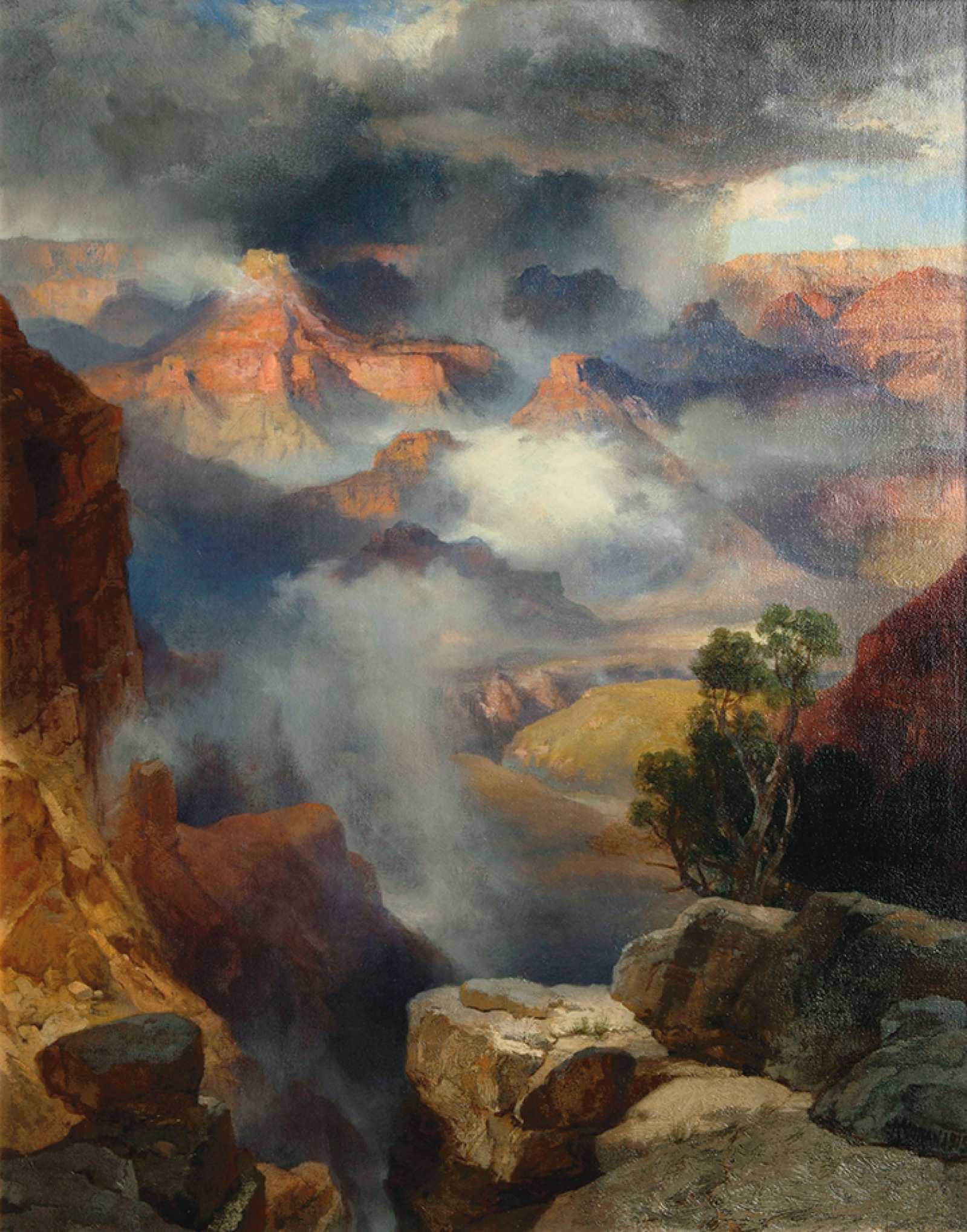Artwork of the Week
Thomas Moran
Self-described as an artist and explorer, Thomas Moran joined two major early exploratory expeditions: Ferdinand V. Hayden’s 1871 expedition to Yellowstone and John Wesley Powell’s 1873 expedition through the Grand Canyon. These trips proved to be watershed moments in the artist’s career: he continued to paint Yellowstone and the Grand Canyon throughout his life.
Capturing the hues and the grandeur of scale of Western landscapes, Moran’s work manifests turn-of-the-century romantic ideals that tended to idealize nature as a spiritual and moral force. Although smaller in size than his epic paintings, Grand Canyon (Mist in the Canyon) nevertheless captures the monumental scale and mystery of this exquisite yet treacherous natural wonder. Lively in color and luminous in tone, the contrast between light and shadow creates a dramatic depiction of this ancient wonderland.
Thomas Moran, (American, 1837-1926), Grand Canyon (Mist in the Canyon), 1915, oil on canvas, 29 x 24 5/8 x 2 7/8 inches. Gift of the George Montgomery Trust, 53-2005.
Phillip K. Smith
Phillip K. Smith III’sLucid Stead Element #4 consists of five horizontal bands within a rectangular aluminum case approximately four-feet high and three-feet wide. The mirrored glass at the center reflects the work’s immediate surroundings, as it also appears to dematerialize. Above and below it, secured in place by rusty nails, are rough wooden planks—scratched, darkened, and slightly warped by exposure to the elements. Wider LED displays constitute the highest and lowest panels. They emanate colored light that gradually morphs in hue, progressing from blue to purple, pink, red, orange, yellow, green, and blue again in a cycle of about ten minutes in duration.
This sculpture was fabricated from materials previously used in the artist’s 2013 work Lucid Stead, a site-specific installation in which Smith, a trained architect, modified the structural remains of an abandoned cabin in the desert near Joshua Tree. In its form and dimensions, Lucid Stead Element #4 evokes a partially boarded-up window. Standing before it, one is invited to experience visual phenomena that suggest an intensified re-creation of the shifting natural light of a day, from sunrise to sunset. As the viewer’s awareness is inevitably drawn to the passage of time, he or she is also confronted with time’s very tangible effects on the weathered wood and with the image of his or her head and shoulders in the mirror.
Phillip K Smith III (American, born 1972) Lucid Stead: Element #4, 2015, brushed aluminum, wood, acrylic, mirror, LED lighting, and custom electronic components, 48 ¾ x 35 ½ x 6 inches. Museum purchase with funds provided by Donna J. MacMillan, 2016.747.


